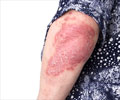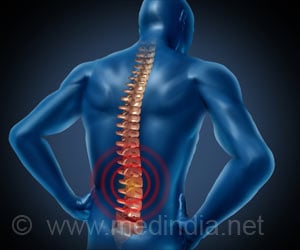Video Directly Observed Therapy (video DOT), a smartphone application is helpful in monitoring the daily tuberculosis therapy. The app is less expensive, easy to use, flexible and does not interfere with the patient’s privacy.
- Video Directly Observed Therapy (video DOT), smartphone application was found to be effective in monitoring the daily tuberculosis therapy
- Video DOT is //less expensive, easy to use, flexible and allows privacy to the patient than in a traditional in-person DOT
- be less expensive//
- Improve privacy concerns raised by patients
Special provisions should be made for home or hospital-based isolation or occasionally forced isolation for infectious patients.
Tuberculosis treatment is helpful to the patients who have been already diagnosed with the disease as well as the general public by reducing the chance of disease transmission.
Tuberculosis caused by Mycobacterium tuberculosis is highly infectious and spreads through coughs or saliva of patients. Many people with active TB have few symptoms, so the bacteria spread before diagnosis.
Tuberculosis treatment requires a daily intake of antibiotics including a multidrug combination and hence patients need the motivation to continue the treatment. If it develops into a drug-resistant TB, the patient has to take additional antibiotics to control the infection.
In the US, in-person DOT is costly because it is done for five days a week on weekdays. But this helps to support patients during the treatment. In-person DOT can be viewed as interfering with the privacy of the patient or stigmatizing.
The research team conducted a pilot study to test the effectiveness of video DOT with a smartphone application developed by emocha Mobile Health in association with Shah and other clinician-scientists at the Johns Hopkins University School of Medicine.
Details of the Study
The pilot study included 28 adult TB patients being treated at three health departments in Maryland. Instead of in-person visits by a health care worker, these 28 TB patients were monitored through the video DOT application.
Patient adherence to treatment was 94 percent with the video DOT and 98 percent with in-person DOT. During holidays and weekends, monitoring was 6 percent higher with video DOT compared to in-person DOT.
The research team conducted qualitative interviews and surveys to assess the app's acceptability to patients and clinicians. Ten patients and sixteen staff participated and completed the surveys after the study. One hundred percent of the patients felt that video DOT was easy to use and preferred it over in-person DOT and 94 percent of the staff reported that the video DOT was found to be effective in monitoring patient adherence. The benefits of using the video DOT added convenience and increased flexibility of using video DOT and the privacy of the patient was maintained.
The research team highlighted that video DOT was less expensive than in-person DOT. A 5-Day/week in-person visits estimated to cost around $2,065 whereas video DOT cost an average of $674 per patient. The expected range of costs to implement video DOT at health departments may range from $66 to $1,449 per patient for a standard six-month treatment course.
Findings of the Study
The team of researchers found that 90 percent of in-person DOT costs are spent on health worker services whereas, in the video DOT, it is only 20 percent of the cost mainly for the software, phones and their data plans and with labor. In this study, 89 percent of patients preferred to use their own devices which is leading to potential additional health department cost savings.
The findings of the study suggest that the video DOT provides a patient-centered approach to TB treatment in monitoring the patients with more flexibility and privacy. This will help the health departments with the ability to document and support treatment adherence.
Small sample size and non-randomization is the study’s limitation. However, video DOT is a promising technology for helping world-wide TB programs.
Source-Medindia
















